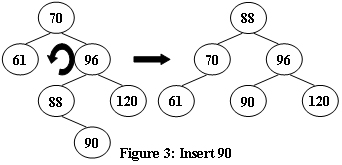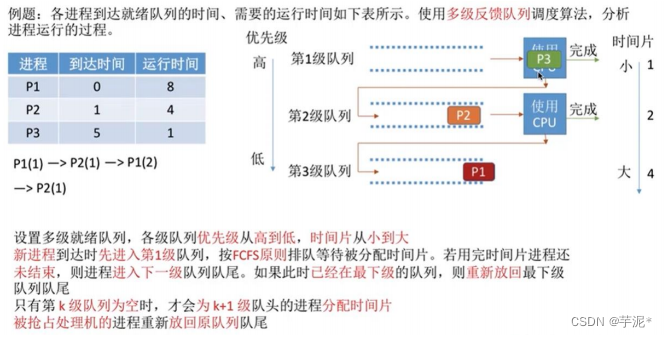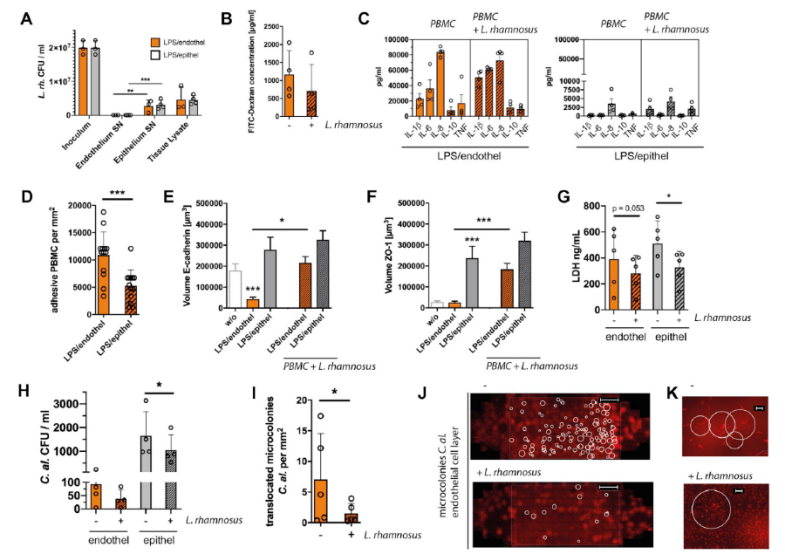题目详情:04-树4 是否同一棵二叉搜索树
给定一个插入序列就可以唯一确定一棵二叉搜索树。然而,一棵给定的二叉搜索树却可以由多种不同的插入序列得到。例如分别按照序列{2, 1, 3}和{2, 3, 1}插入初始为空的二叉搜索树,都得到一样的结果。于是对于输入的各种插入序列,你需要判断它们是否能生成一样的二叉搜索树。
输入格式:
输入包含若干组测试数据。每组数据的第1行给出两个正整数N (≤10)和L,分别是每个序列插入元素的个数和需要检查的序列个数。第2行给出N个以空格分隔的正整数,作为初始插入序列。随后L行,每行给出N个插入的元素,属于L个需要检查的序列。
简单起见,我们保证每个插入序列都是1到N的一个排列。当读到N为0时,标志输入结束,这组数据不要处理。
输出格式:
对每一组需要检查的序列,如果其生成的二叉搜索树跟对应的初始序列生成的一样,输出“Yes”,否则输出“No”。
输入样例:
4 2
3 1 4 2
3 4 1 2
3 2 4 1
2 1
2 1
1 2
0
输出样例:
Yes
No
No主要思路:
首先建树,依据最初的输入建initialTree,再依次建每个testTree,然后用前序遍历同时遍历initialTree与testTree,来判断这两棵树是否相等
第一次写错误:
建树的插入操作时最后还要返回当前层的root
代码实现:
#include <stdio.h>
#include <stdbool.h>
#define MAX_SIZE 15
#define SAME 1
#define DIFFERENT 0
#define EMPTY 0
typedef struct {
bool isEmpty;
int leftChild;
int rightChild;
}Node;
Node initialTree[MAX_SIZE];
Node testTree[MAX_SIZE];
int insert(int root,const int num, Node* tree) {
if(root == EMPTY) return num;
int leftChildPointer = tree[root].leftChild;
int rightChildPointer = tree[root].rightChild;
if(num > root) {
tree[root].rightChild = insert(rightChildPointer, num, tree);
}
else if(num < root) {
tree[root].leftChild = insert(leftChildPointer, num, tree);
}
return root; //插入关键之一在于最后一步,返回root,这是必不可少的,只有这样才能一级一级向上返回
}
int buildTree(int* array, Node* tree, int nodeNum) {
for(int i = 0; i < MAX_SIZE; i++) {
tree[i].isEmpty = true;
tree[i].leftChild = EMPTY;
tree[i].rightChild = EMPTY;
}
int root = array[1];
tree[root].isEmpty = false;
for(int i = 2; i <= nodeNum; i++) {
int tmp = array[i];
tree[tmp].isEmpty = false;
int noUse = insert(root, tmp, tree);
}
return root;
}
int judge(int initialRoot, Node* initialTree, int testRoot, Node* testTree) {
if(initialRoot == 0 && testRoot == 0) return 1;
if(initialRoot != testRoot) return 0;
int leftSubTree = judge(initialTree[initialRoot].leftChild, initialTree, testTree[testRoot].leftChild, testTree);
int rightSubTree = judge(initialTree[initialRoot].rightChild, initialTree, testTree[testRoot].rightChild, testTree);
if(leftSubTree && rightSubTree) return 1;
else return 0;
}
//void printTree(int root, Node* tree) {
// if(root == 0) return;
//
// printf("%d ", root);
// printTree(tree[root].leftChild, tree);
// printTree(tree[root].rightChild, tree);
//}
int main() {
int N, L;
while(scanf("%d", &N) && (N != 0) && scanf("%d", &L)) {
int tmp[N];
for(int i = 1; i <= N; i++) scanf("%d", &tmp[i]);
int initialRoot = buildTree(tmp, initialTree, N);
// printTree(initialRoot, initialTree);
// putchar('\n');
for(int i = 0; i < L; i++) {
for(int j = 1; j <= N; j++) {
scanf("%d", &tmp[j]);
}
int testRoot = buildTree(tmp, testTree, N);
// printTree(testRoot, testTree);
// putchar('\n');
if(judge(initialRoot, initialTree, testRoot, testTree)) printf("Yes\n");
else printf("No\n");
}
}
return 0;
}题目详情:04-树5 Root of AVL Tree
An AVL tree is a self-balancing binary search tree. In an AVL tree, the heights of the two child subtrees of any node differ by at most one; if at any time they differ by more than one, rebalancing is done to restore this property. Figures 1-4 illustrate the rotation rules.




Now given a sequence of insertions, you are supposed to tell the root of the resulting AVL tree.
Input Specification:
Each input file contains one test case. For each case, the first line contains a positive integer N (≤20) which is the total number of keys to be inserted. Then N distinct integer keys are given in the next line. All the numbers in a line are separated by a space.
Output Specification:
For each test case, print the root of the resulting AVL tree in one line.
Sample Input 1:
5
88 70 61 96 120
Sample Output 1:
70
Sample Input 2:
7
88 70 61 96 120 90 65
Sample Output 2:
88
代码长度限制
16 KB
时间限制
400 ms
内存限制
64 MB
简单翻译:
就是给一个二叉平衡树的插入序列,依据这个序列构建二叉平衡树,并返回根节点
主要思路:
用插入法构建,即需要在程序里实现左右单旋与左右双旋
要特别注意的是,如果插入一个节点导致树不平衡了,我们要找到从下往上第一个不平衡的地方进行调整,调整完整个树就平衡了,而不是说要返回到最上面进行调整。
举个列子
假设我们在递归的过程中,输入AVLTree是NULL,也就是如下情况:

15这里是一定平衡的(左右都是空),返回给11,11这里肯定也是平衡的,返回给9,但9就不是平衡的了
然后就可以判断让9恢复平衡应该进行哪种操作,即RR还是RL,这里判断为RR。
调整完以后,再返回到9的父节点,这个时候9的父节点再进行判断,以此类推。
第一次写错误:
(1)插入节点进行左旋右旋后对应两个调换位置的节点的高度也要修改
(2)这个问题很隐蔽,首先说明一点,高度是从底往顶计算,从1开始
自己代码

参考代码:
 为什么一个是1一个是0呢?
为什么一个是1一个是0呢?
因为我的代码风格之前跟随了算法训练营,所以理解这题我认为前面部分是终止条件,即遍历到空节点后插入新节点,但忽视了我在插入后直接本轮递归结束返回了,而参考代码还会往下执行一次高度的计算,参考代码虽然建新节点是将高度设为0,但最后还有计算高度,那时叶子节点高度变成1,而我的代码没有执行后面,所以就不能设置高度是0而直接设为1
就是这个小问题困扰我半天……
代码实现:
#include <stdio.h>
#include <stdlib.h>
typedef struct Node Node;
struct Node {
int data;
Node* left;
Node* right;
int height;
};
int getMax(int a, int b) {
return a > b ? a : b;
}
int getTreeHeight(Node* root) {
int height = 0;
if(root == NULL) height = 0;
else height = root -> height;
return height;
}
Node* singleRightRotation(Node* root) {
Node* rightSubTree = root -> right;
root -> right = rightSubTree -> left;
rightSubTree -> left = root;
root -> height = getMax(getTreeHeight(root -> left), getTreeHeight(root -> right)) + 1;
rightSubTree -> height = getMax(getTreeHeight(rightSubTree -> left), root -> height) + 1;
return rightSubTree;
}
Node* singleLeftRotation(Node* root) {
Node* leftSubTree = root -> left;
root -> left = leftSubTree -> right;
leftSubTree -> right = root;
root -> height = getMax(getTreeHeight(root -> left), getTreeHeight(root -> right)) + 1;
leftSubTree -> height = getMax(getTreeHeight(leftSubTree -> left), root -> height) + 1;
return leftSubTree;
}
Node* rightLeftRotation(Node* root) {
root -> right = singleLeftRotation(root -> right);
return singleRightRotation(root);
}
Node* leftRightRotation(Node* root) {
root -> left = singleRightRotation(root -> left);
return singleLeftRotation(root);
}
Node* insert(Node* root, int target) {
if(root == NULL) {
root = (Node* )malloc(sizeof(Node));
root -> data = target;
root -> left = NULL;
root -> right = NULL;
root -> height = 1;
return root;
}
if(target < root -> data) {
root -> left = insert(root -> left, target);
if(getTreeHeight(root -> left) - getTreeHeight(root -> right) == 2) {
if(target < root -> left -> data) {
root = singleLeftRotation(root);
}
else {
root = leftRightRotation(root);
}
}
}
else if(target > root -> data) {
root -> right = insert(root -> right, target);
if(getTreeHeight(root -> right) - getTreeHeight(root -> left) == 2) {
if(target > root -> right -> data) {
root = singleRightRotation(root);
}
else {
root = rightLeftRotation(root);
}
}
}
root -> height = getMax(getTreeHeight(root -> left), getTreeHeight(root -> right)) + 1;
return root;
}
void deleteTree(Node* root) {
if(root == NULL) return;
deleteTree(root -> left);
deleteTree(root -> right);
free(root);
return;
}
void printTree(Node* root) {
if(!root) return;
printf("root -> data = %d root -> height = %d\n", root -> data, root -> height);
printTree(root -> left);
printTree(root -> right);
return;
}
int main() {
int N;
scanf("%d", &N);
Node* result = NULL;
for(int i = 0; i < N; i++) {
int tmp;
scanf("%d", &tmp);
result = insert(result, tmp);
}
// printTree(result);
printf("%d", result -> data);
deleteTree(result);
return 0;
}本题参考文章:
树5 Root of AVL Tree
题目详情:04-树6 Complete Binary Search Tree
A Binary Search Tree (BST) is recursively defined as a binary tree which has the following properties:
- The left subtree of a node contains only nodes with keys less than the node's key.
- The right subtree of a node contains only nodes with keys greater than or equal to the node's key.
- Both the left and right subtrees must also be binary search trees.
A Complete Binary Tree (CBT) is a tree that is completely filled, with the possible exception of the bottom level, which is filled from left to right.
Now given a sequence of distinct non-negative integer keys, a unique BST can be constructed if it is required that the tree must also be a CBT. You are supposed to output the level order traversal sequence of this BST.
Input Specification:
Each input file contains one test case. For each case, the first line contains a positive integer N (≤1000). Then N distinct non-negative integer keys are given in the next line. All the numbers in a line are separated by a space and are no greater than 2000.
Output Specification:
For each test case, print in one line the level order traversal sequence of the corresponding complete binary search tree. All the numbers in a line must be separated by a space, and there must be no extra space at the end of the line.
Sample Input:
10 1 2 3 4 5 6 7 8 9 0Sample Output:
6 3 8 1 5 7 9 0 2 4
代码长度限制
16 KB
时间限制
400 ms
内存限制
64 MB
简单翻译:
给一串构成树的序列,已知该树是完全二叉搜索树,求它的层序遍历的序列
主要思路:
1. 因为二叉搜索树的中序满足:是一组序列的从小到大排列,所以只需将所给序列排序即可得到中序数组in
2. 假设把树按从左到右、从上到下的顺序依次编号,根节点为0,则从根结点root = 0开始中序遍历,root结点的左孩子下标是root*2+1,右孩子下标是root*2+2
递归的终止条件是下标比节点数目大
递归时也按中序遍历
单层处理逻辑是将已知的中序输出结果数组里对应位置的数字赋给通过从0~n -1下标中序遍历的level数组
因为是中序遍历,所以遍历结果与中序数组in中的值从0开始依次递增的结果相同,即in[t++](t从0开始),将in[t++]赋值给level[root]数组
3. 因为树是按从左到右、从上到下的顺序依次编号的,所以level数组从0到n-1的值即所求的层序遍历的值,输出level数组即可
如下图解释

第一次写错误:
第一次直接没思路
代码实现:
#include <stdio.h>
#define MAX_SIZE 2001
int N;
int pointerToIn;
int in[MAX_SIZE];
int level[MAX_SIZE];
void traversal(int root) {
if(root >= N) return;
traversal(root * 2 + 1);
level[root] = in[pointerToIn++];
traversal(root * 2 + 2);
return;
}
void sort(int* array, int end) {
for(int i = 0; i < end; i++) {
for(int j = i + 1; j < end; j++) {
if(array[j] < array[i]) {
int tmp = array[i];
array[i] = array[j];
array[j] = tmp;
}
}
}
}
int main() {
scanf("%d", &N);
for(int i = 0; i < N; i++) {
scanf("%d", &in[i]);
}
sort(in, N);
// for(int i = 0; i < N; i++) printf("%d", in[i]);
// printf("\n");
pointerToIn = 0;
traversal(0);
for(int i = 0; i < N; i++) {
printf("%d", level[i]);
if(i < N - 1) printf(" ");
}
return 0;
}
参考文章:
题目详情:04-树7 二叉搜索树的操作集
本题要求实现给定二叉搜索树的5种常用操作。
函数接口定义:
BinTree Insert( BinTree BST, ElementType X );
BinTree Delete( BinTree BST, ElementType X );
Position Find( BinTree BST, ElementType X );
Position FindMin( BinTree BST );
Position FindMax( BinTree BST );其中BinTree结构定义如下:
typedef struct TNode *Position;
typedef Position BinTree;
struct TNode{
ElementType Data;
BinTree Left;
BinTree Right;
};
- 函数
Insert将X插入二叉搜索树BST并返回结果树的根结点指针; - 函数
Delete将X从二叉搜索树BST中删除,并返回结果树的根结点指针;如果X不在树中,则打印一行Not Found并返回原树的根结点指针; - 函数
Find在二叉搜索树BST中找到X,返回该结点的指针;如果找不到则返回空指针; - 函数
FindMin返回二叉搜索树BST中最小元结点的指针; - 函数
FindMax返回二叉搜索树BST中最大元结点的指针。
裁判测试程序样例:
#include <stdio.h>
#include <stdlib.h>
typedef int ElementType;
typedef struct TNode *Position;
typedef Position BinTree;
struct TNode{
ElementType Data;
BinTree Left;
BinTree Right;
};
void PreorderTraversal( BinTree BT ); /* 先序遍历,由裁判实现,细节不表 */
void InorderTraversal( BinTree BT ); /* 中序遍历,由裁判实现,细节不表 */
BinTree Insert( BinTree BST, ElementType X );
BinTree Delete( BinTree BST, ElementType X );
Position Find( BinTree BST, ElementType X );
Position FindMin( BinTree BST );
Position FindMax( BinTree BST );
int main()
{
BinTree BST, MinP, MaxP, Tmp;
ElementType X;
int N, i;
BST = NULL;
scanf("%d", &N);
for ( i=0; i<N; i++ ) {
scanf("%d", &X);
BST = Insert(BST, X);
}
printf("Preorder:"); PreorderTraversal(BST); printf("\n");
MinP = FindMin(BST);
MaxP = FindMax(BST);
scanf("%d", &N);
for( i=0; i<N; i++ ) {
scanf("%d", &X);
Tmp = Find(BST, X);
if (Tmp == NULL) printf("%d is not found\n", X);
else {
printf("%d is found\n", Tmp->Data);
if (Tmp==MinP) printf("%d is the smallest key\n", Tmp->Data);
if (Tmp==MaxP) printf("%d is the largest key\n", Tmp->Data);
}
}
scanf("%d", &N);
for( i=0; i<N; i++ ) {
scanf("%d", &X);
BST = Delete(BST, X);
}
printf("Inorder:"); InorderTraversal(BST); printf("\n");
return 0;
}
/* 你的代码将被嵌在这里 */输入样例:
10
5 8 6 2 4 1 0 10 9 7
5
6 3 10 0 5
5
5 7 0 10 3
输出样例:
Preorder: 5 2 1 0 4 8 6 7 10 9
6 is found
3 is not found
10 is found
10 is the largest key
0 is found
0 is the smallest key
5 is found
Not Found
Inorder: 1 2 4 6 8 9
代码长度限制
16 KB
时间限制
400 ms
内存限制
64 MB
主要思路:
就是将课本上搜索二叉树增删查的操作实现了一遍
第一次写错误:
(1)二叉搜索树的delete操作时,要考虑待删除节点可能有两个孩子,也可能只有一个孩子或就是叶子节点的情况。
对于节点有两个孩子,转化为删除叶子节点或节点只有一个孩子,在右子树里找到最小值,然后替换,接着就是在右子树里删除最小值节点
代码实现:
BinTree Insert(BinTree BST, ElementType X) {
if (BST == NULL) {
BST = (Position)malloc(sizeof(struct TNode));
BST->Data = X;
BST->Left = NULL;
BST->Right = NULL;
return BST;
}
if (X < BST->Data) { // changed from BST->Data < X
BST->Left = Insert(BST->Left, X);
}
else if (X > BST->Data) { // changed from BST->Data > X
BST->Right = Insert(BST->Right, X);
}
// else case is not needed, since X already exists in the BST
return BST;
}
BinTree Delete(BinTree BST, ElementType X) {
if(BST == NULL) {
printf("Not Found\n");
return BST;
}
if(X < BST -> Data) {
BST -> Left = Delete(BST -> Left, X);
}
else if(X > BST -> Data){
BST -> Right = Delete(BST -> Right, X);
}
else {
Position tmp;
BinTree leftSubtree = BST -> Left;
BinTree rightSubtree = BST -> Right;
if(leftSubtree && rightSubtree) {
tmp = FindMin(rightSubtree);
BST -> Data = tmp -> Data;
rightSubtree = Delete(rightSubtree, tmp -> Data);
}
else {
tmp = BST;
if(leftSubtree == NULL) {
BST = rightSubtree;
}
else {
BST = leftSubtree;
}
free(tmp);
}
}
return BST;
}
Position Find(BinTree BST, ElementType X) {
if (BST == NULL) {
return NULL;
}
if (X < BST->Data) {
return Find(BST->Left, X);
}
else if (X > BST->Data) {
return Find(BST->Right, X);
}
else {
return BST;
}
}
Position FindMin(BinTree BST) {
if (BST == NULL) {
return NULL;
}
if (BST->Left == NULL) {
return BST;
}
else {
return FindMin(BST->Left);
}
}
Position FindMax(BinTree BST) {
if (BST == NULL) {
return NULL;
}
if (BST->Right == NULL) {
return BST;
}
else {
return FindMax(BST->Right);
}
}



















